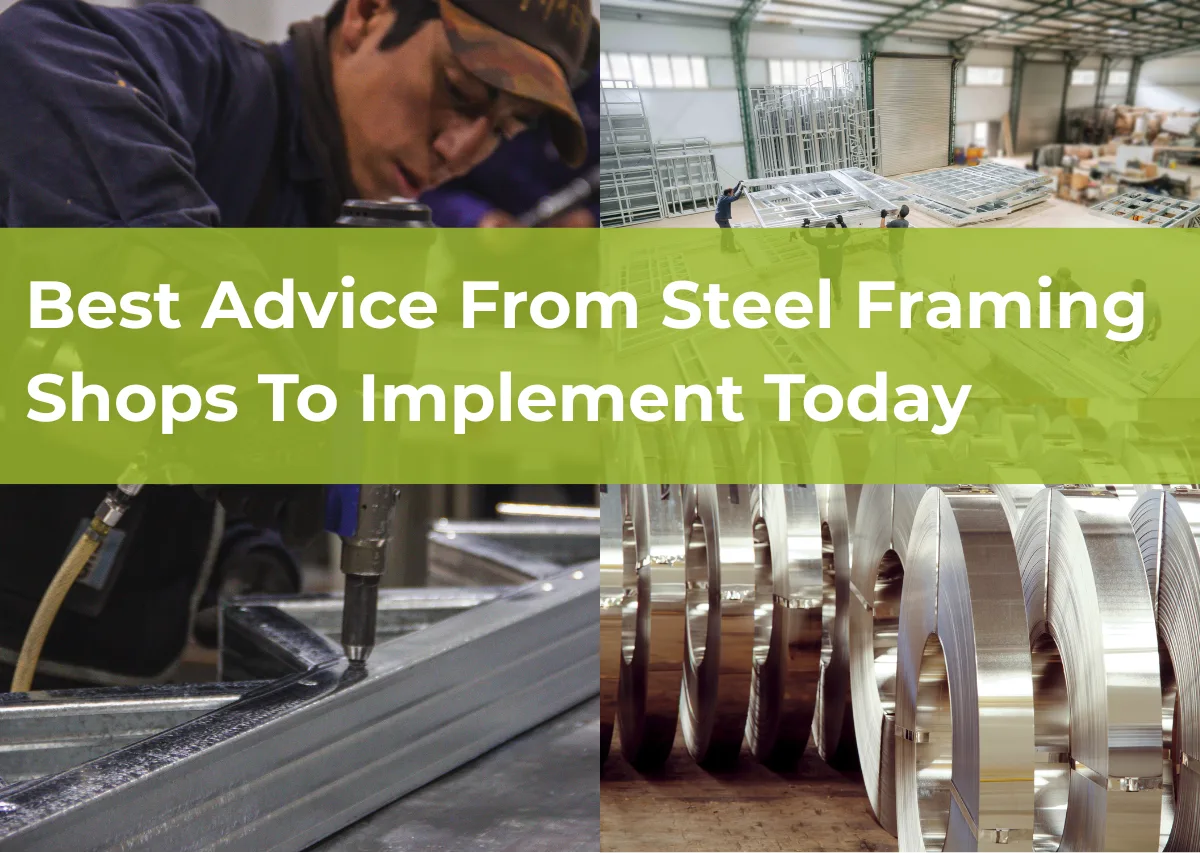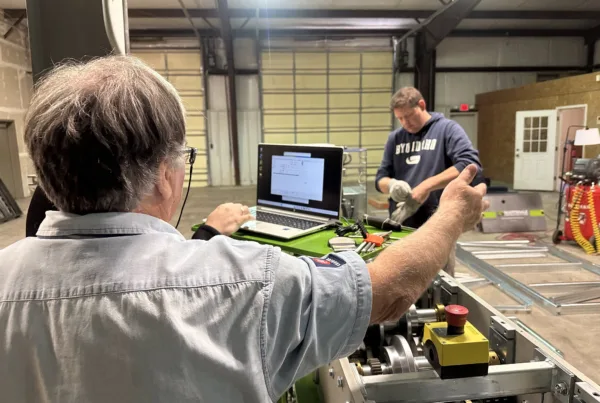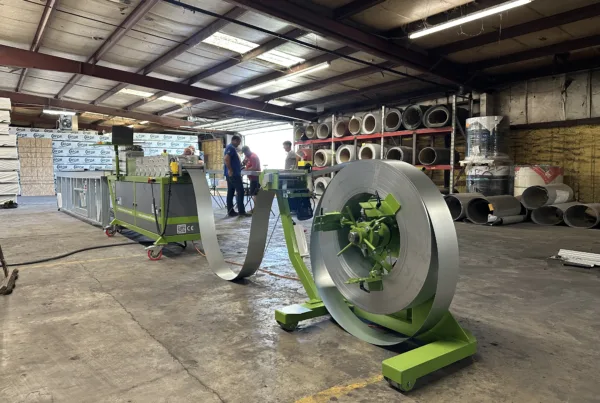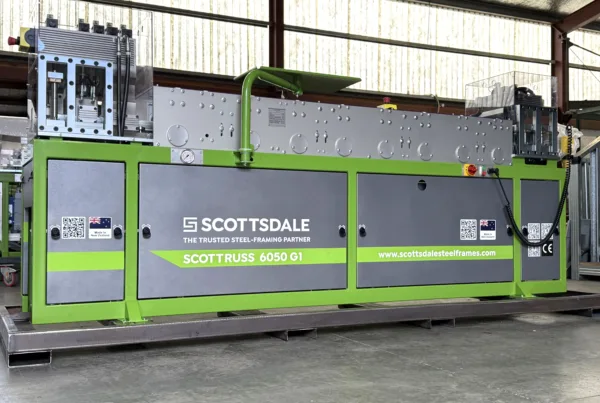In the competitive world of steel construction, maximizing the efficiency of your roll forming production isn’t just about faster machines, but it’s about smarter planning, better workflows, and aligning your crew with the pace and precision of the process. From cold-formed steel members to complete steel framing assemblies, even small changes can make a big difference in the success and health of your business. Here we explore insights from our most successful steel shops operating Scottsdale roll forming machines around the world. These lessons are not just theories, they’re practical, field-tested strategies to unlock the full potential of your roll forming line.
First Step Toward Roll Forming Efficiency – Production Planning
The old saying still holds true: “If you fail to plan, you plan to fail.” In roll forming production, effective planning is one of the most powerful tools for improving throughput and reducing downtime.
Group Jobs by Material Type & Gauge
Grouping roll forming jobs by material type and gauge is important because changing coils is one of the most time-consuming and wasteful operations in any roll forming line. Changing coils can take on average 15 minutes and if your shop is changing coil multiple times a day, the minutes add up to hours. Not only does changing coil require stopping the machine and reloading, but it also involves resetting roll heights and often generates scrap. Best practice is to group jobs with the same material and thickness together. For example, running all 0.55mm Truecore jobs before moving on to 0.75mm Zincalume jobs. This simple change in roll forming production planning reduces changeovers and makes better use of each coil.
Visualize the Production Schedule
Whether digital or physical, a visible production schedule board helps operators and supervisors see what’s next. It clarifies coil requirements, changeover points, and crew allocation, reducing confusion and last-minute decisions in the roll forming process.
Pre-Stage Steel Coils
Don’t wait until the machine is idle to start preparing the next coil. Having the coil pre-staged and ready allows for a faster transition between jobs, minimizing downtime.
Plan for Coil End Waste
The tail end of every coil often contains material that’s unusable due to thickness variations or damages. By accounting for this in your production planning, you can sequence jobs in a way that minimizes scrap and reduces surprises during roll forming production.
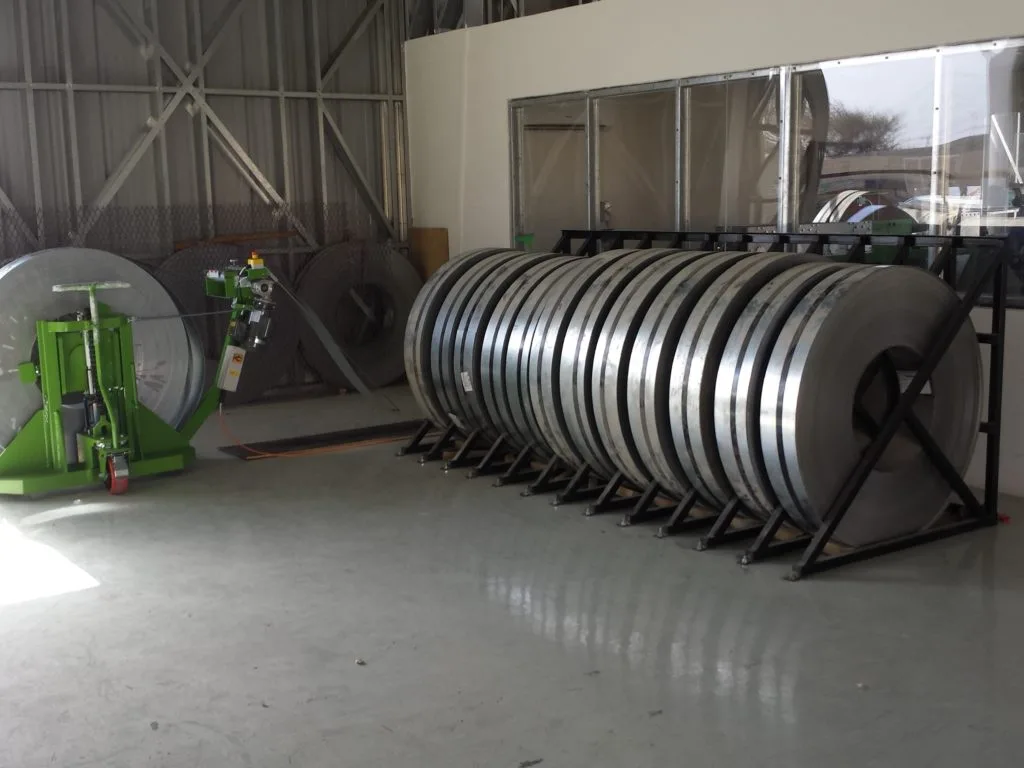
The Human Element in Roll Forming – Smarter Job Allocation
Machine speed means nothing without the people who support it. In cold-formed steel framing production, especially with manual assembly and fastening processes, how we assign roles can make or break the output goals.
Proven Production Model of One Operator Plus Two Riveters
One of the most effective setups in high-performing steel framing shops pairs one operator with two riveters on the production line. The operator manages the roll former, ensuring accurate output and maintaining an organized workflow. The riveters focus on fastening components, performing quality checks, and stacking completed frames. This team structure creates a balanced workflow where the operator maintains a steady pace while the riveters comfortably keep up, preventing the fastening stage from becoming a bottleneck. With clear roles and dedicated focus, riveters can work with greater precision, minimizing errors and rework. The result is improved productivity, higher-quality output, and a more sustainable roll forming operation where no team member is overloaded.
Deep Expertise Through Specialized Roles in Roll Forming
When team members are consistently assigned to the same task, they tend to develop greater efficiency and speed through repetition and familiarity. This consistency in roll forming production also helps them gain a clear understanding of expectations, reducing the likelihood of errors or miscommunication. Over time, the team often discovers useful shortcuts or personal techniques that enhance performance, contributing to smoother workflows and higher overall productivity. This leads to fewer errors, greater pride in craftsmanship, and better overall product quality of cold-formed steel members.
Avoid Burnout with Strategic Rotations
Excessive repetition can lead to disengagement, fatigue, and a decline in overall morale. To counter this, introducing job rotation at planned intervals helps keep team members mentally engaged and reduces the risk of overuse injuries in physically demanding roles. It also promotes cross-training and increases operational flexibility, allowing team members to step into multiple roles as needed. By varying the workday, job rotation enhances motivation and contributes to a more dynamic and resilient workforce. The best-performing roll forming operations find the balance between role mastery and job variety, keeping production sustainable and the crew motivated.

Matching Roll Forming Machine Speed to Crew Capacity
In the world of automation, it’s tempting to push machines to their max output. But in roll forming production, speed without support often leads to more problems than solutions.
Max Speed Doesn’t Equal to Max Productivity in Steel Framing
When your roll forming machine runs faster than the crew can keep up, mistakes multiply. Fastening errors, incorrect assembly, or missed steps lead to rework and costing time, materials, and morale.
Pauses Destroy Momentum in Steel Framing Production
Crew members who feel overwhelmed will begin to pause the roll forming machine frequently, attempting to catch up. These stops negate any perceived benefit of higher machine speeds and introduce inconsistency into your cold-formed steel framing output.
Roll Forming at a Sustainable Speed is Key
Instead of going full throttle, set your roll former to a speed that matches your team’s ability to assemble and finish cold-formed steel components correctly. Then, consider increasing it slowly over time, week by week, as the team gains comfort and confidence.
There are key benefits to roll forming operation with this approach. This leads to fewer mistakes and less rework by allowing the crew to operate at a manageable pace, resulting in higher accuracy and consistency. The workflow becomes steadier, with fewer interruptions caused by crew fatigue or frequent roll forming machine stoppages. As a result, team satisfaction improves, which can reduce turnover and promote a more stable workforce. Over time, this method also supports organic growth in production capacity, as gradual speed increases help the team adapt and improve without becoming overwhelmed.
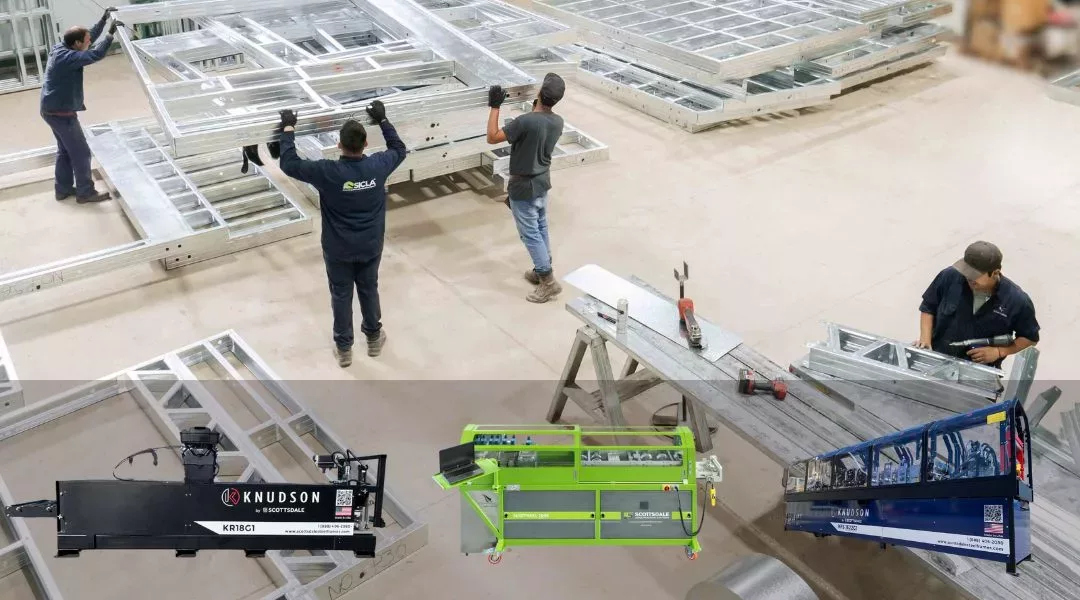
Make the Most of Your Roll Forming Investment
Whether you’re new to steel framing or running multiple roll forming machines across several shifts, the key to maximizing productivity lies in optimizing every part of the system, from coil changes and job scheduling to crew roles and machine speed.
Here’s a quick summary of the most effective practices:
- Plan jobs to reduce changeovers
- Use visual tools to manage production
- Pre-stage materials to cut downtime
- Assign jobs strategically, with smart crew ratios
- Run machines at sustainable speeds
The true cost of inefficiency in roll forming isn’t just slower output, it’s the hidden losses in material waste, morale, rework, and missed opportunities. By implementing these proven strategies from our successful customers, you’ll elevate your steel construction operations and position your team for long-term success.
Explore how Scottsdale Construction Systems’ roll forming machines and ecosystem can take your business to the next level. Whether you’re producing cold-formed steel members or complete wall panels and truss systems, a smarter approach always wins. For more insights on roll forming machines, steel framing systems, and factory optimization strategies, contact us at sales@scottsdalesteelframes.com or call us at +1 (888) 406-2080.
